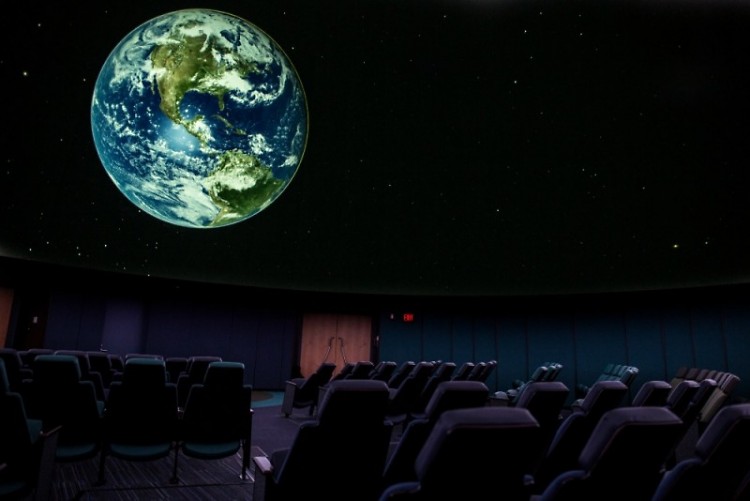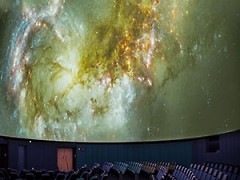A total eclipse of the sun will be visible across a long, narrow swath of the continental United States on Monday, August 21, 2017. As the moon slips exactly between the Earth and sun, casting the tip of its cone shaped shadow onto our planet, observers within a 70-mile-wide band stretching from coast to coast across the country’s midsection will witness what many consider to be one of the most spectacular events in nature. For about two and one half minutes, twilight will envelop the landscape, the brighter stars and planets will appear in the darkened sky, and a spectacular halo of light – the solar corona – will surround the blackened disk of the eclipsed sun. No darkening glasses will be required to view the total phase of the eclipse.
It takes about an hour and a half for the shadow to sweep from coast to coast, crossing parts of 10 states from Oregon down to South Carolina. The brief period of totality will occur during morning hours local time in the West, midday across the central plains and Midwest, and afternoon in eastern states. Totality is preceded by a progressively deeper partial eclipse lasting about an hour and fifteen minutes, and is followed by an equally long emerging phase.
Significant partial eclipses will be visible throughout broad sections of the U.S., including close to 85 percent coverage of the solar disk by the moon in the West Michigan region shortly after 2 p.m. EDT August 21. Eye protection using filters approved to block all but a small portion of sunlight entering the observer’s eye must be worn throughout the partial phases.
One must be within the narrow zone of total eclipse to see the unparalleled spectacle, and that zone is within a day’s drive for much of the mainland. Amazingly, this is the first total eclipse to cross such a large section of the U.S. continent since July 1878, and the first to cross any part of the mainland since February of 1979.
The Grand Rapids Public Museum is teaming with eclipse activities media sponsor WZZM-13 to present a “Great American Eclipse” information forum at 7:30 p.m. on Wednesday evening, March 1 in the Meijer Theater at the GRPM. The event is free and open to the public.
Dave DeBruyn, Curator Emeritus of the Roger B. Chaffee Planetarium will discuss how the motions of the sun and moon produce eclipses, but rarely total solar eclipses, over a given location, and where you must locate to enjoy the upcoming celestial show at its best. He will orient potential observers about what to look for and concentrate on during the very short period of total eclipse, and what not to do. Dave has traveled the world to see five total solar eclipses.
According to Dave, “This will seem like the shortest two and one half minutes you have ever experienced, but I guarantee it will be among the most memorable.”
WZZM Chief Meteorologist George Lessens will discuss prospects for clear weather at various places along the path of totality.
According to Lessens: “A weather system in the wrong place at eclipse time or midday convective cloudiness in the warm August air could spoil the show.” He will suggest locations where that is least likely to happen.
Both DeBruyn and Lessens will give useful tips to potential eclipse chasers, and answer questions. There will also be information about eclipse related activities planned at the GRPM prior to and during the significant partial eclipse on August 21.
For more information, please visit grpm.org.
The Rapidian, a program of the 501(c)3 nonprofit Community Media Center, relies on the community’s support to help cover the cost of training reporters and publishing content.
We need your help.
If each of our readers and content creators who values this community platform help support its creation and maintenance, The Rapidian can continue to educate and facilitate a conversation around issues for years to come.
Please support The Rapidian and make a contribution today.


